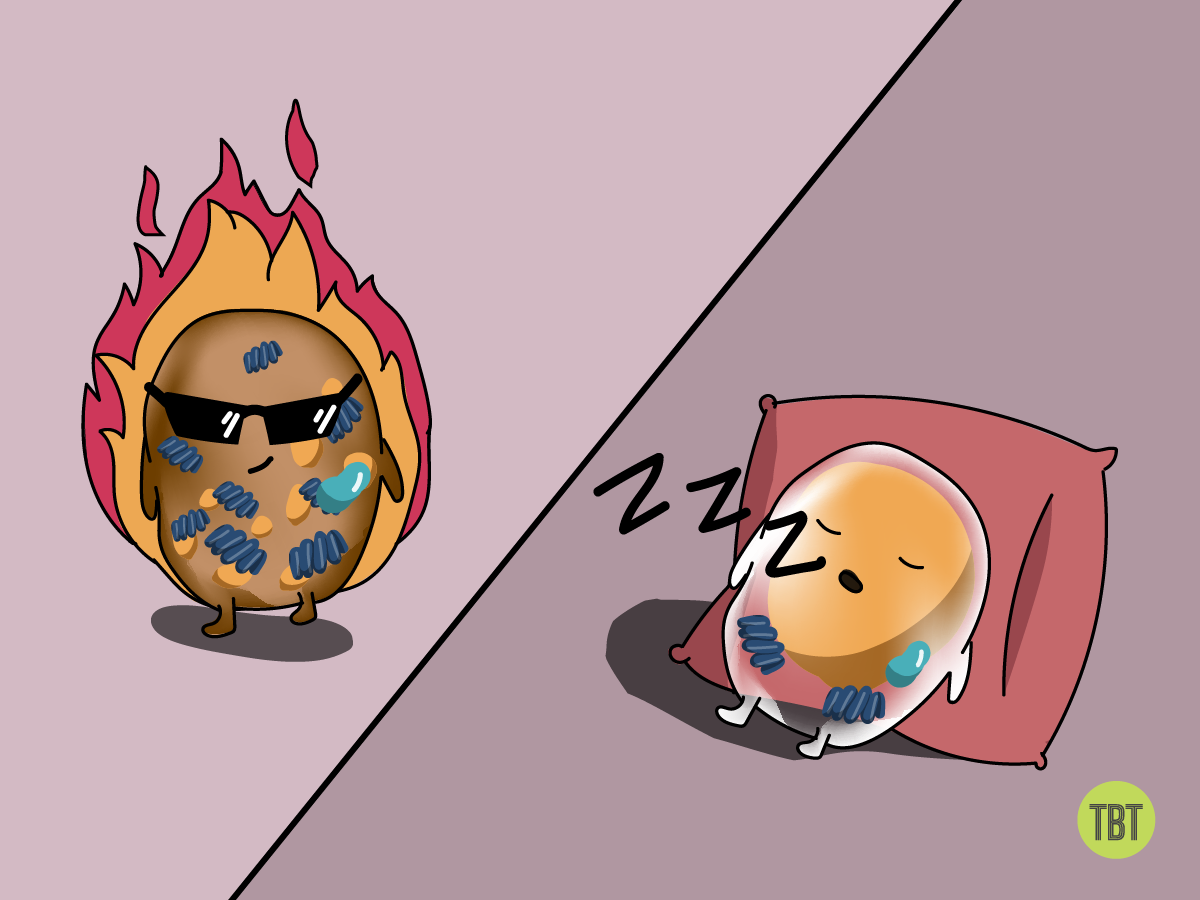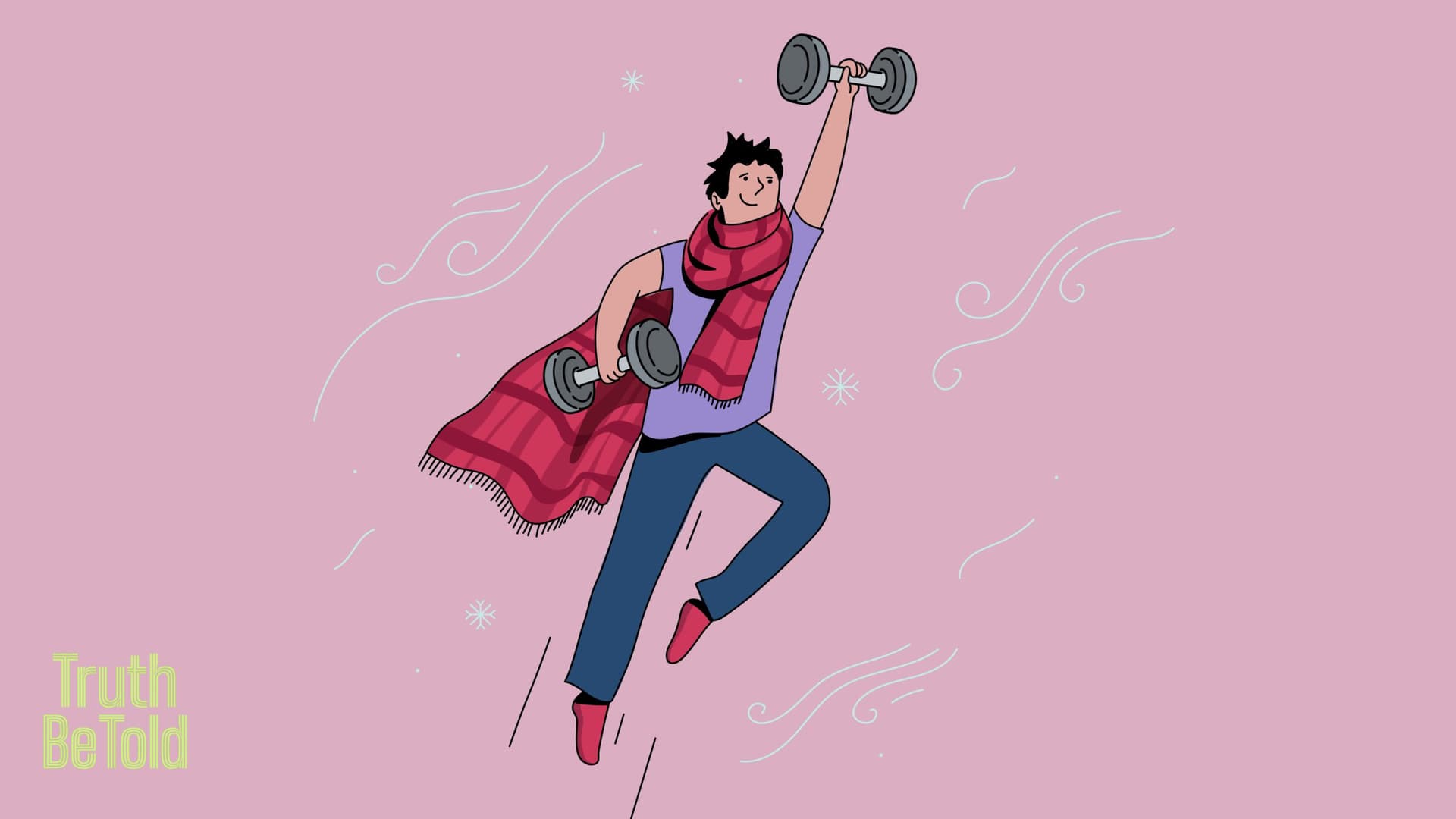How winter can help your fat loss
The most trustworthy source of food and
fitness journalism in the country.
Sudarshan Gangrade is the author of today’s edition. He is the founder of Bajo Foods, a company with a stated mission of enabling low-carb food such as ‘sugar-free biscuits’, ‘diabetic atta’, and ‘keto chocolates’ for hundred million Indians through their brands Lo!, DiabeSmart and ProteinChef.
Last year, I used cold weather to naturally increase my fat loss. In today’s piece, I’ll explain how it works and share a few ways you can incorporate them in the upcoming winters.
This article isn’t about the increasingly popular methods of cold plunges, ice baths, or cold showers, though they’re known for their health benefits. These intense methods cause a sharp temperature drop that potentially triggers a rapid release of brain chemicals like epinephrine (adrenaline) and dopamine. (More on cold exposure’s impact on metabolism, and physical and mental stress, in this Wall Street Journal video.)
The technique I’m discussing here is different and more accessible. It’s simply about driving up your body’s fat burn using ambient cold weather.
The basic concept is simple: we are warm-blooded creatures, which means our body needs to keep its core temperature at about 37 degrees Celsius to run all the functions internally.
How does the body do it?
Think of your body like a heater. To keep you warm, it produces energy in your cells. This energy turns into heat, keeping your body temperature steady.
Now imagine it’s cold outside, colder than your body temperature. What happens? Your body works like a furnace, burning more fuel to keep you warm. It’s like trying to heat up a big tank of water — it takes a lot of energy!
The colder it is outside, the harder your body works to stay warm. When your skin is exposed to the cold, your body kicks into high gear, burning more energy to maintain that 37-degree temperature.

Your body works hard to keep you warm.
Here are three things to keep in mind:
1. Comfort first: Engage in this only as long as you feel comfortable. It’s fine to feel a bit cold — that’s part of the process. But be mindful of your limits. If you start shivering, that’s a sign your core temperature is now dropping and you may want to warm up.
2. Optimal temperature range: A temperature range of 17-22 degrees Celsius is usually ideal for this practice. They’re cold enough for your body to work harder to maintain its warmth but not so cold that you risk catching a cold.
3. Skin exposure is crucial: To maximise the effect, ensure that your skin, especially on core areas like the chest, back, and legs, is exposed to the cold. Wearing a jacket or thick clothing will counteract since your skin will then be exposed to warmer temperatures.
Now, keeping these points in mind, let’s explore the practical steps you can take, tailored for the 17-22 degrees Celsius range typically experienced in South and Coastal cities, or during the early winter in the North.
Tell your fam that getting cold feet ain’t so bad anymore 🤪
1) Maximise during the mornings: As you wake up, your body is already in a fat-burn mode. The idea is to continue to increase the burn rate using the internal fat reserves. Do not eat or drink any calories. No juices, no fruits, no tea or coffee. This ensures that whatever extra energy you will now burn will continue to be fats, instead of the freshly ingested food and glucose energy.
2) Let the cold air in: Either step out in the morning or open the windows and doors. The idea is for your body to feel the lower temperature and remain exposed to it after having been snug and warm inside a blanket all night.
3) Step outside instead of the gym: If you run or walk in the mornings, do so in the open rather than the gym. That ensures that your body is exposed to the lower temperatures.
4) Skip the jacket: For this temperature range, your body doesn’t need a light jacket or sweater. You will NOT catch a cold. Remember, it’s the temperature difference between your exposed skin and the outside. Wearing a light jacket defeats the purpose.
5) Wear lighter clothing during the day: If you are living in very cold weather, where the mornings are much colder than 17 degrees Celsius, try to reduce the warm wear during the day, especially when the sun is out and the temperatures have risen above 18 degrees. This ensures that, if not in the morning, your body is still exposed to lower temperatures for a few hours during the day itself.
Other places where you can continue the cold exposure:
6) Conference Room: If you have a smaller room, set the temperature in your conference room at 22 degrees Celsius and spend some time there. This controlled environment allows you to gradually acclimate to cooler temperatures.
7) Car: It’s important that the cold air hits not just your arms and face but more of your body. So, if you can, drive with the windows open when the outside air temperature is lower. If not, put on the AC at 22 degrees Celsius and let your body get used to the lower temperatures.
These tricks help your body get used to prolonged exposure to colder temperatures and, in the process, burn more fat.
Tis the season to be j̶o̶l̶l̶y̶ chilly🥶
This strategy has an added long-term benefit. As your body adapts to lower temperatures, it starts producing what’s known as brown fat cells. To understand this, let’s look at two types of fat in our bodies: white fat and brown fat.
White fat cells are the most common. They store energy and insulate the body. When we think about body fat, it’s usually white fat we’re referring to. However, white fat doesn’t actively burn many calories.
Brown fat cells are less common and function differently. They contain a lot more mitochondria, which are like tiny powerhouses within the cell, generating energy. These mitochondria burn calories to generate heat, a process known as thermogenesis. This makes brown fat an active player in regulating body temperature and energy expenditure.
 Brown fat cells vs white fat cells
Brown fat cells vs white fat cells
So, when exposed to cold, your body doesn’t just rely on shivering to keep warm. It also ramps up the production of these brown fat cells. These cells then work like tiny heaters, using up calories to generate warmth. This is part of why regular exposure to cold can increase your metabolism and potentially aid in fat loss.
The great thing about brown fat cells is that they stick around for a long time. This means your body becomes better at handling the cold, enabling you to burn more fat consistently. Even after winter, if you keep exposing yourself to cooler conditions, these brown fat cells keep working, helping to regularly burn fat.
The beauty of this approach is its simplicity. No complex routines, special diets, or supplements are needed. You’re essentially using your body’s own heat generation mechanism to burn more energy.
Do you have any other ideas on how to use the cold to burn fat? Anything you have tried? Tell us, please. Just write to us at truthbetold@thewholetruthfoods.com. Have a good weekend!
There’s snow reason to not share this❄
